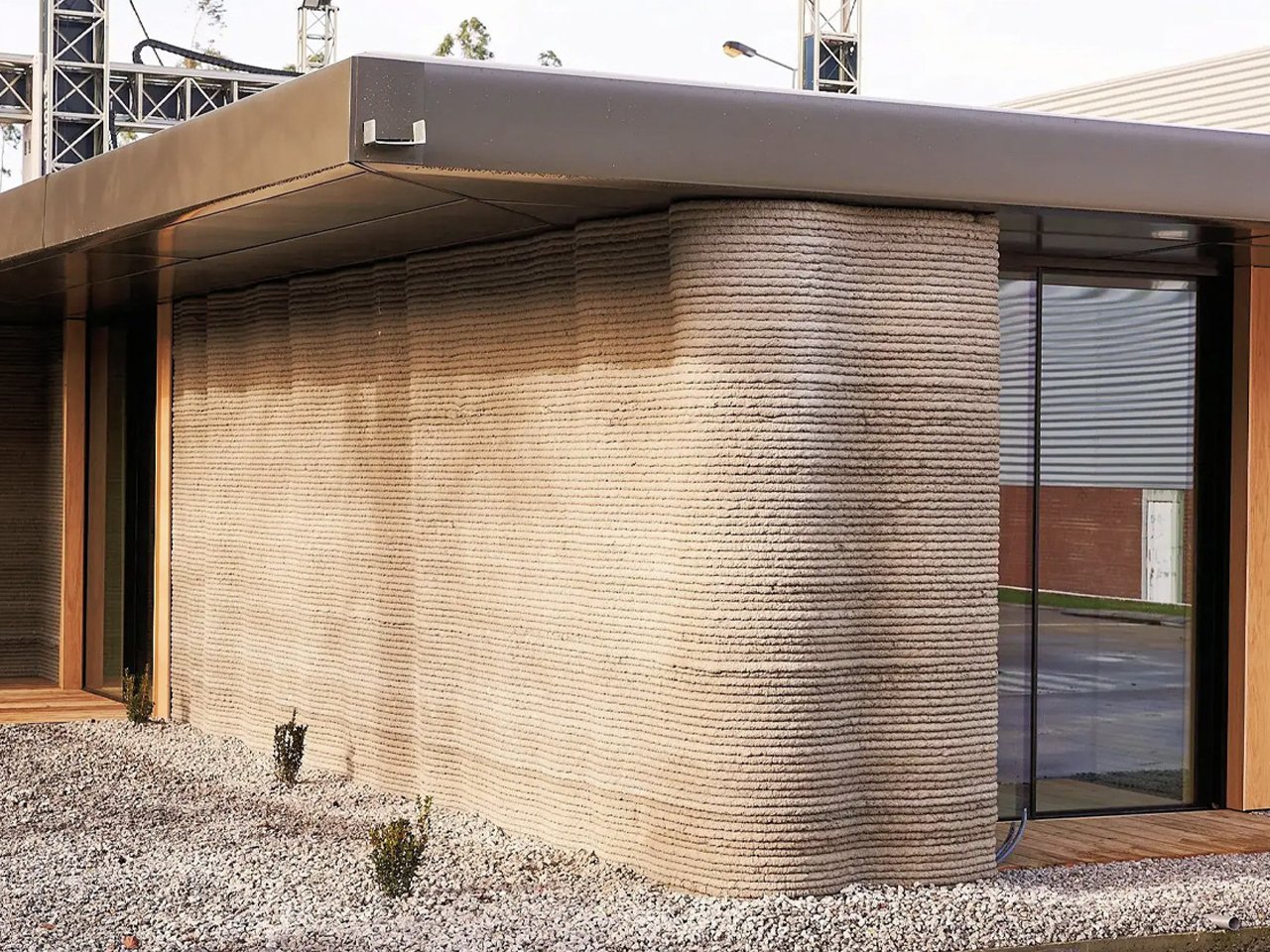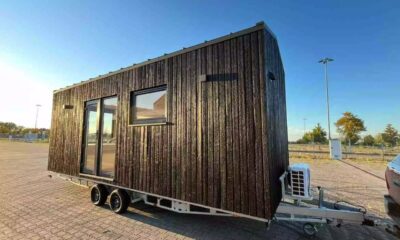Technology
3D-Printed Homes Revolutionize Affordable Housing Solutions

The construction industry is undergoing a significant transformation with the rise of 3D-printed homes, which promise to address the urgent need for affordable housing. This innovative technology not only reduces construction costs but also shortens building timelines and enhances design flexibility. As a result, the potential for homeownership is becoming more accessible, sustainable, and tailored to individual preferences.
Reducing Costs and Waste
One of the primary advantages of 3D-printed homes is their ability to significantly lower construction costs. By utilizing automated robotic systems that print walls layer by layer, the need for extensive on-site labor is diminished. This method allows builders to use locally sourced, cost-effective materials, further reducing expenses and making homeownership more attainable for many.
The precision of 3D printing means that homes can be constructed in a matter of days rather than months. For example, the collaboration between Japanese architecture studio Lib Work, Arup, and WASP resulted in the Lib Earth House Model B, a 1,076-square-foot residence in Kumamoto Prefecture. This home is primarily built from soil, showcasing how traditional materials can be effectively utilized with modern technology. Its design features gently curved walls and a flat roof, making it both aesthetically pleasing and environmentally conscious.
Accelerated Construction Timelines
The speed of construction with 3D printing is a game-changer, particularly in regions facing housing shortages. In Louth, Ireland, HTL.tech completed the Grange Close project, which consists of three units spanning 330 square meters (3,550 square feet). This project was delivered in just 12 working days, demonstrating how 3D printing can expedite the building process by 35% compared to traditional methods.
Each home spans 110 square meters (1,184 square feet) and incorporates a cement-like mixture for the walls, while traditional building methods were used for roofing and finishes. This blend of techniques results in homes that not only meet modern design standards but also provide a sense of quality and permanence.
Design Flexibility and Customization
3D printing opens up a world of design possibilities, allowing architects to create homes that are unique and tailored to individual preferences. Complex shapes and intricate details become feasible, enabling homeowners to personalize their living spaces.
A notable example is QR3D, a project designed by Park + Associates in Singapore. This multi-storey, 3D-printed home stands four stories tall in Bukit Timah and features a façade of layered, grooved concrete that highlights its 3D-printed origins. With 97% of its walls printed on-site, the home exemplifies how technology can redefine urban living in densely populated areas.
Sustainability in Construction
Sustainability is a core benefit of 3D-printed homes. The precision of the printing process results in significantly less waste compared to traditional building methods. Additionally, many of the materials used are recycled or locally sourced, thus minimizing the environmental impact.
In Almaty, Kazakhstan, a residence designed by BM Partners stands as Central Asia’s first 3D-printed home. Built to endure seismic risks and extreme weather, it showcases the resilience of 3D construction. The walls are made from a specially developed cement mix with a compression strength of nearly 60 MPa, enabling it to withstand earthquakes up to magnitude 7.0. This home not only meets safety standards but also incorporates energy-efficient features, providing long-term savings on energy costs.
Accessibility and Resilience
3D-printed homes provide exceptional durability, often surpassing that of conventional construction. Their solid, monolithic walls eliminate weak points, making them resistant to extreme weather and natural disasters. This strength is particularly crucial in vulnerable regions, where safety is a top priority.
Moreover, the affordability and rapid construction of these homes facilitate access to secure housing for low-income communities and disaster-affected areas. For instance, a project by Portugal-based Havelar completed a single-storey home spanning 80 square meters in just 18 hours using COBOD’s BOD2 printer. Although modest, this residence prioritizes practicality and efficiency, demonstrating how 3D printing can effectively address global housing challenges.
The evolution of 3D-printed homes illustrates a promising solution for affordable housing, blending innovation with sustainability and resilience. As the technology continues to advance, it has the potential to reshape the future of housing, making homeownership more accessible to communities worldwide.
-

 Politics1 week ago
Politics1 week agoSecwepemc First Nation Seeks Aboriginal Title Over Kamloops Area
-

 World4 months ago
World4 months agoScientists Unearth Ancient Antarctic Ice to Unlock Climate Secrets
-

 Entertainment4 months ago
Entertainment4 months agoTrump and McCormick to Announce $70 Billion Energy Investments
-

 Lifestyle4 months ago
Lifestyle4 months agoTransLink Launches Food Truck Program to Boost Revenue in Vancouver
-

 Science4 months ago
Science4 months agoFour Astronauts Return to Earth After International Space Station Mission
-

 Technology3 months ago
Technology3 months agoApple Notes Enhances Functionality with Markdown Support in macOS 26
-

 Top Stories1 month ago
Top Stories1 month agoUrgent Update: Fatal Crash on Highway 99 Claims Life of Pitt Meadows Man
-

 Sports4 months ago
Sports4 months agoSearch Underway for Missing Hunter Amid Hokkaido Bear Emergency
-

 Politics3 months ago
Politics3 months agoUkrainian Tennis Star Elina Svitolina Faces Death Threats Online
-

 Politics4 months ago
Politics4 months agoCarney Engages First Nations Leaders at Development Law Summit
-

 Technology4 months ago
Technology4 months agoFrosthaven Launches Early Access on July 31, 2025
-

 Top Stories3 weeks ago
Top Stories3 weeks agoFamily Remembers Beverley Rowbotham 25 Years After Murder





















